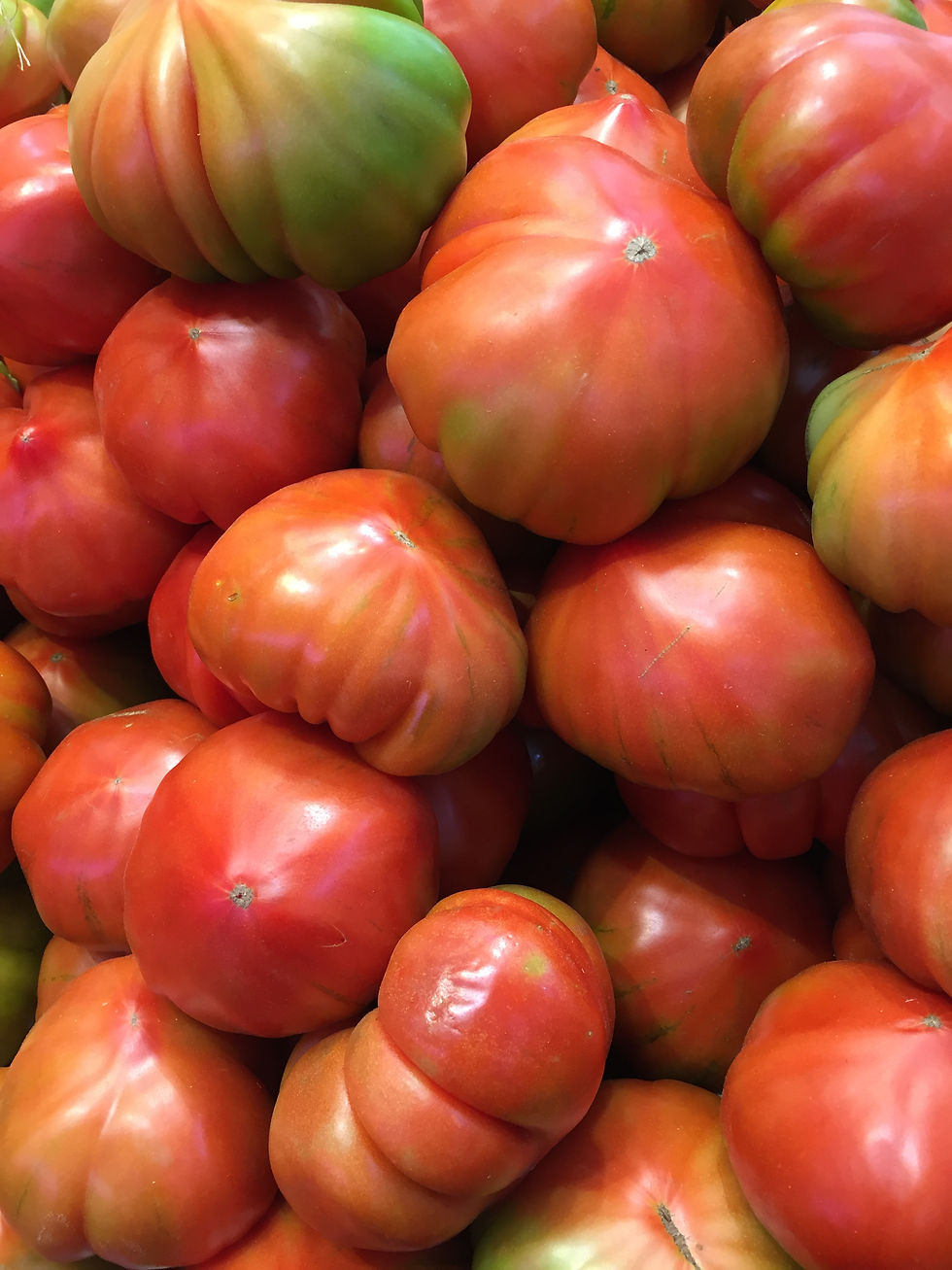BY: Brenda Bolton, Mobile County Master Gardener I www.mobilecountymastergardeners.org

Q - I just bought my first tomato plants, but I need a Tomato 101 class!
A - Close your eyes for a second and imagine your back-yard tomato, the firm plump of it in your hand like a newborn warm from the bath, that amazing blend of sweet and tart acidity, the combined smell of green and ripe around the stem—caught at just the right moment in the sun, and the juice on your tongue, like a fine French sauce, that finishes it perfectly.
We’ve adopted the tomato, an immigrant from the Peru area, as our own. Occasionally, we recognize perfection. Tomatoes are worth the effort.
Start with a healthy transplant of a proven coastal producer (Celebrity, Better Boy, Cherokee Purple heirloom, Juliet grape and others). Time your planting for our climate (actually, about a week ago in years when we don’t have a March ice storm, or next week at the latest). You may have purchased your plants at the March 18-19 Mobile Botanical Gardens Plantasia Sale. Area hardware, seed, and box stores are also good sources.
Plant the transplant, deeply—up to half the length of the plant stalk— because roots form along that stalk for a better developed root system. Good roots, better fruit. Set plants about two feet apart so roots have room to develop. Create a small depression around the plant base to catch water. Cut a 3” section of a milk carton and push into the soil to surround the transplant to combat cutworms. In hot sun, shade the transplants for a couple of days while they adjust.
Tomatoes need sun, 6-8 hours daily, and this creates a problem for late planted tomatoes, because our summer sun is so hot, another reason to plant early. You know the saying, it’s not the heat, it’s the humidity. Our humid summers contribute to diseases, such as Blossom End Rot. BER results from a calcium deficiency caused by conditions ranging from drought to over-irrigation and high humidity. Maintain soil pH of 6.0-6.5. Use a soil drench at the base of affected plants: 4T calcium nitrate or calcium chloride per gallon of water.
Probably the worst tomato problem here is that morning you walk out to find your plants - beautiful just yesterday - shriveled and dead. Bacterial Wilt, a soil borne bacteria, causes sudden plant death. To guard against it, rotate where you grow tomatoes, immediately remove a wilted plant and its surrounding soil, pull up spent plants at season’s end, and then solarize your garden soil. And compost, compost, compost.
Tomatoes need water, 1-2” per week, but need to drain well. Sandy soil will require more irrigation, clay soil less, more in intense heat. You get the idea.
The other most common pest here is the hornworm, a big, fat green moth caterpillar. Check your plants every morning and pick off the worms to control them. They devour leaves, but leaves do grow back, so if you just keep the number controlled, you can have poison-free tomatoes. Wildlife love to share your tomatoes but usually like them ripe. You can trick the critters by picking the tomatoes green to ripen on a sunny windowsill inside.
Fertilizer applications are needed throughout the growing season for optimal production. After the first fruit reaches 1 ½ inches in diameter, apply one tablespoon of ammonium sulfate* in an eight-inch circle around the base of each plant (not directly to the plant). Repeat applications at four-to-six-week intervals to maintain a modest, healthy growth rate.
As your tomatoes grow, you’ll need to support them with a support for the mature height and form of your variety. Don’t wait until they are too mature to effectively cage or stake.
In an era before the decorative, brightly-colored, wire tomato cages now found in the stores and the high-tech, engineered cages found in specialty catalogs, we kids gathered around my parents on the cool St. Augustine carpet under the pecan tree out back and “helped” cut wood sticks to stake tomatoes. For a few summers they even sold them in bundles to neighborhood seed and hardware stores, I think in an attempt to turn the kids into budding entrepreneurs. It didn’t take. We developed more love for the tomato-as-food than for the money to be made. Still, we don’t measure family memories by the dollar, do we?
As I search each fall for a place to store those wire cages, I often remember how easy it was for my father to simply pull up his untreated wood stakes—the ends of which had begun their return to earth—to grind and compost them, already anticipating next year’s garden.
* Use chemicals only according to the directions on the label. Follow all directions, precautions, and restrictions listed.
Garden Events for Your Calendar
What: Bryant Career Technical Center Plant Sale
When: April 2, 2022 (8 am – 2 pm)
Where: 8950 Padgett Switch Road, Irvington, AL
Plants may be purchased throughout March
On weekdays (8-10 am and 12-2 pm)
What: MBG One Enchanted Evening, Through the Looking Glass
Envisioning the Future, a fundraising event
Full Cocktail Dinner, Dancing Under the Stars
When: Thursday, April 7, 2022, 7-9:45 pm
Where: MBG, 5151 Museum Dr, Mobile
Tickets: $150 per person
Or email acashin@mbgardens.org
What: Baldwin County Master Gardeners Plant Sale
When: April 7-9, 2022 (9 am – 4 pm)
Where: Hwy 98 West of Fish River bridge
Across from Weeks Bay Reserve
What: MCMG Spring Educational Seminar
Theme: Exploring Our Food - Farm to Fork
When: Sat, April 23, 2022 9:30 – 3 pm
Where: Jon Archer Center
1070 Schillinger Rd N, Mobile 36608
Fee: $30 (includes lunch) Limited seating available
Registration: www.mobilecountymastergardeners.org/2022seminar
Master Gardener Helpline: 1-877-252-4769
Comments